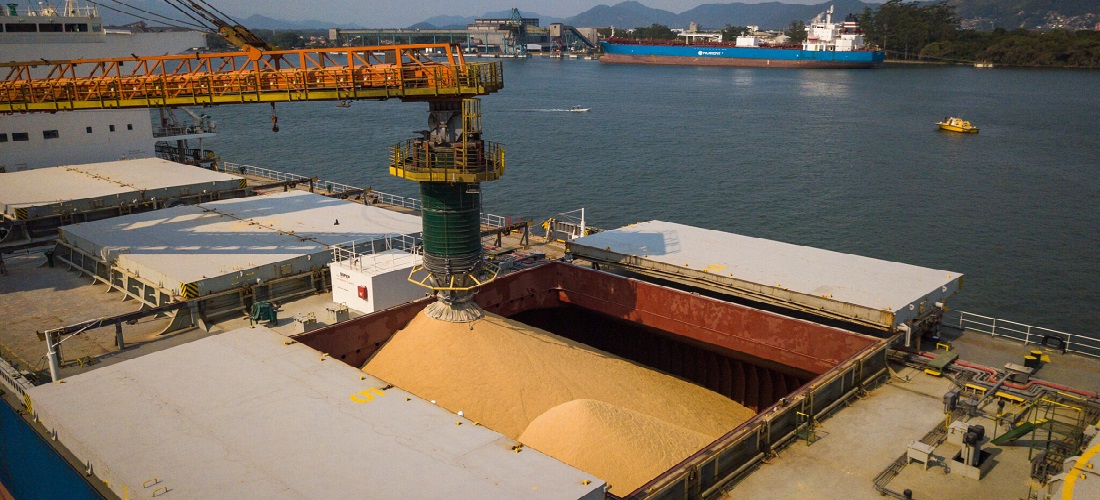
Rabobank Report Warns of Brazil’s Port Capacity Strain Amid Soaring Grain Exports
Apr, 22, 2024 Posted by Gabriel MalheirosWeek 202417
The volume of Brazilian soybean and corn exports is anticipated to outpace the capacity of the country’s ports by 2027, as per an assessment unveiled by Rabobank in their report titled “Can Brazil’s Infrastructure Handle the Growing Production of Grains and Oilseeds?”
Presently, the loading capacity of Brazilian ports stands at 178 million tonnes. However, Rabobank suggests that the investments slated for the next two years are projected to only supplement this by 15 million tonnes, falling short of the terminals’ anticipated throughput.
According to the Dutch bank, this expansion will prove inadequate to accommodate the surging supply of soybeans and corn in Brazil. Rabobank estimates that between 2023 and 2030, the soybean cultivation area in the country is expected to grow by 3.5% annually. Consequently, the bank forecasts soybean production to escalate from 159 million to 206 million tons by the decade’s end.
Regarding corn, the harvest is anticipated to surge from 123 million tonnes to 180 million by the 2029/30 crop season, according to Rabobank’s estimations. The expansion of the second crop is set to drive the increase in cereal production.
The chart below displays Brazil’s top grain export ports in the first two months of 2024. The data is from DataLiner.
Top Grain Export Ports | Jan 2024 – Feb 2024 | WTMT
Source: DataLiner (click here to request a demo)
Processing Capacity
Given the upswing in grain harvests and the constraints of port infrastructure, the country will need to invest in boosting the processing capacity of corn and soybeans, Rabobank suggests. “Brazil may face challenges in exporting its growing production of grains and oilseeds due to inadequate investment in infrastructure and additional constraints, such as the new anti-deforestation law from the European Union,” Rabobank highlights in the report.
The Dutch bank posits that one repercussion of insufficient investment in logistics infrastructure amidst a backdrop of heightened national grain production will be the persistent escalation of freight costs. Furthermore, the report indicates that increasingly, funds for storage investment will need to be sourced from producers’ coffers. Historically, industries and cooperatives have been the primary contributors to investments in grain warehouses across the country.
Source: Globo Rural
Click here to read the original news report: https://globorural.globo.com/especiais/caminhos-da-safra/noticia/2024/04/por-que-portos-de-graos-do-brasil-estao-perto-do-limite-segundo-banco-holandes.ghtml
-
Ores
Jul, 19, 2019
0
Chile reduces copper price forecast for 2019
-
Shipping
Jun, 21, 2021
0
ZIM and Alibaba extend commercial partnership
-
Other Logistics
Oct, 10, 2023
0
Rumo throughput volumes grow 11.8% in September
-
Ports and Terminals
Feb, 08, 2024
0
Questions Raised Over Santos Port’s Approach to Fuel Terminal Concession

